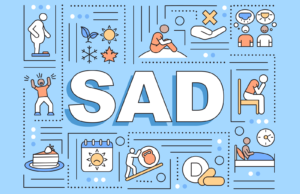Daylight Savings Time may end in Iowa
In July of 1908, Thunder Bay, Canada, experienced a longer day than any other location in the area.
“How is this possible?” one might ask. Well, this area was the first to use daylight savings time, the process of changing the time on the clock to add one hour of sunlight to the end of the day.
Because time is an imaginary concept made up in our minds, it was easy to implement. Soon, the world adopted this practice, causing 70 countries and more than one billion people to be affected by the new light schedule.
Democratic Senator Jeff Danielson recently sponsored a bill that would eliminate the tradition of turning the clock backward and forward each year in Iowa. Unsurprisingly, many are outraged by this proposal.
A study by a University of Colorado cardiologist found that ending daylight savings will cause people to lose an hour of sleep and be 25 percent more likely to have a heart attack on the first Monday compared to any other Monday.
Others see no issue with removing this time-change, as they see it as a burden. According to an Accuweather poll, 17 percent of people think daylight savings is worth the hassle, while 83 percent don’t.
Another argument against daylight savings is from farmers. Often times, farmers rise early to tend to their crops, and dark mornings do not allow an appropriate light supply for this. Also, some parents worry their children will be going to school in the dark.
According to CNN, transitioning from daylight savings time could increase depression, due to the morning darkness. In Denmark, depression cases increase greatly in psychiatric hospitals directly after the switch.
Another illness potentially caused by daylight savings time is Seasonal Affective Disorder (SAD). SAD affects nearly 1.6 billion people across the world and occurs heavily during the short days of winter. However, some believe there are other variables at play, meaning darkness isn’t directly responsible for SAD.
On the flipside, daylight savings is considered a smart idea because it maximizes natural daylight, allowing more time to finish work or tasks in the later hours, rather than wasting light in the morning as most are asleep.
One thing everyone can agree on is the amount of opposing arguments on the topic. Some say daylight savings saves energy, while some argue the opposite. According to a 1970s study by the US Department of Transportation, one percent of electricity that was consumed that year was saved through daylight savings. Another study by economists Laura E. Grant and Matthew J. Kotchen discovered that when every Indiana county adjusted the clocks, there was an increase in electricity consumption during the fall, due to people turning up their air conditioning. Both studies argue the question: Does daylight savings time save electricity?
Despite the controversy, Danielson is firm on his beliefs on the issue, supporting a standard year-round time for Iowa. “I don’t think it’s good to cut our days so short in the fall,”he said. “My goal is to leap forward and stay there.”









You must be logged in to post a comment Login